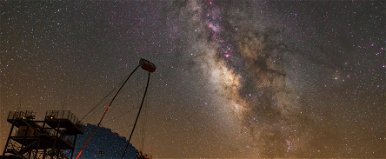A group of astronomers They report an amazing discovery. In fact, the reports are about two incredible discoveries: finding the smallest star ever, which orbits its companion in the smallest known period of time. The time interval is only 20.5 minutes, which is by far the shortest time period among binary stars. .

NASA filmed a cosmic explosion in the constellation Taurus, and the footage was stunningly stunning
Read more…
Read more…
The star is part of a binary system called TMTS J0526 and is located 2,760 light-years from Earth. J0526B is a hot dwarf star, and we're not exaggerating when we say it's tiny, with a radius of only seven times that of Earth.
For comparison, the radius of Jupiter is 11.2 times the radius of Earth, the radius of Saturn is 9.5, and the radius of Neptune is four times the radius of Earth. It is the smallest star ever discovered and is still considered a star. About a third of the Sun's mass is crammed into this small volume, so this tiny star weighs about 350 times the mass of Jupiter.
The heaviest object, J0526A, is a white dwarf that weighs about 74% of the Sun's mass. It is rich in carbon and oxygen, indicating the type of star it evolved from. For white dwarf Stars similar to the sun The course is called its final stage. Small stars are not massive enough to go supernova, but they develop into red giants before shedding their outer layers to reveal an extremely dense core not much larger than a planet.
The two objects orbit each other once every 20.5 minutes, which is the shortest known orbital period for any binary star system.

NASA has made a startling discovery about the Milky Way: It rewrites the scientific findings of our galaxy
Read more…
Read more…
Observations using the Tsinghua-Ma Huateng University Survey Telescope (TMTS) support some theoretical views that lighter subdwarfs are the product of a different stellar evolution than slightly heavier ones – although we are still talking about stars less than half the mass of the Sun. sun. If we can find more of these things, we can better explain how they became so extreme.
TMTS began observations in 2020, and by the end of 2023, it will have surveyed more than 27 million stars. Dozens of short-period sources were found in the catalog, but TMTS J0526 was the shortest. This has been confirmed by further observations using the Keck I telescope in Hawaii and the Gran Telescopio Canarias (GTC) telescope on the island of La Palma (this video is not the discovery itself, but an older recording using the telescope in the Canary Islands).
Observations indicate that the white dwarf actually deforms the dwarf star with each orbit. The gravitational force of the tides stretches the bright young star, affecting its brightness, a change captured by telescopes. In the future, this motion may also be detected by the space-based gravitational wave observatory LISA, but at the moment this phenomenon is considered too subtle for the detectors we currently have.
source. Nature astronomy












































